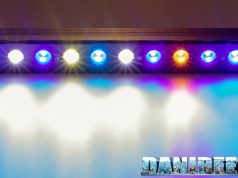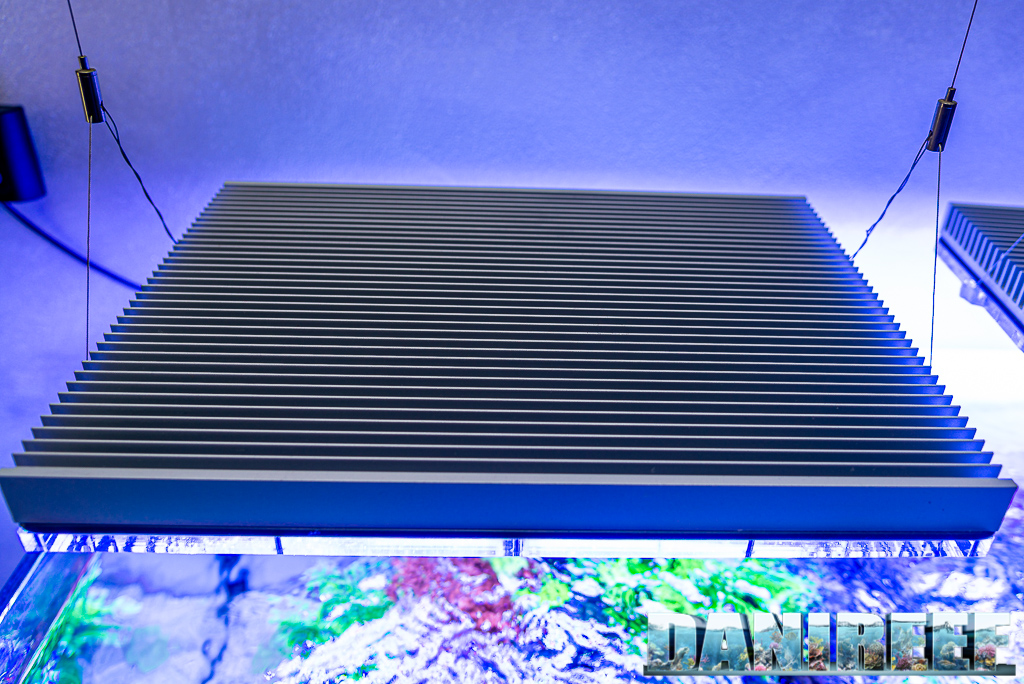Our new working method DaniReef LAB for PAR measurement
During the long nights spent on our forum we always wondered how could we compare PAR from different ceiling lights. Even though we had the perfect device, the Quantum Meter MQ-510 di Apogee, we always referred only to the value measured at the centre at 20 cm of distance, more or less.
The Quantum Meter MQ-510 measures the PAR, expressed in PFFD that is photosynthetic photon flux density in μmol m-2 s-1. This device is calibrated to work underwater, so if it’s in air the measured value has to be divided by 1,32 that’s the dive factor. We have to do the conversion. The values you’re going to see are correct.

We decided to make a square base of 70×70 cm, we set 17 fiducial points where we have to place the sensor Quantum Meter MQ-510 and we also made 3 lifts of 20, 40 and 60 cm for the ceiling light, so to have the same distance from the sensor. This will allow us to create curves in the space that can be compared to these of other ceiling lights, all at the same distances. Notice that this distance is measured between the base of the sensor and the ceiling light. In reality it should be decreased of 3,5 cm that is the height of the measurement cylinder and increased by 0,5 cm that’s the dimension of the spacers that lift the ceiling light.
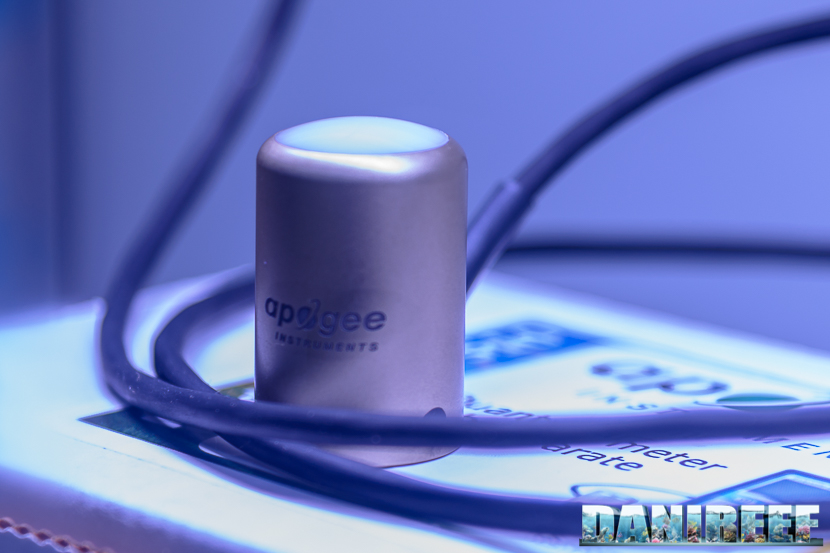
In total the three measurements are made from 17, 37 and 57 cm of distance. Because they’re done in air they will be corrected.
PAR measurement from 17 cm of distance
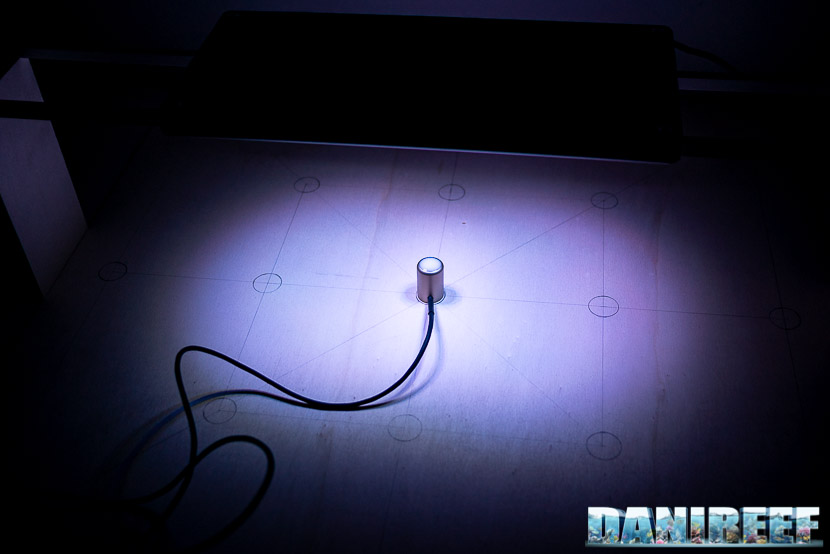
This is the condition of the test. Below there are the chart and the device, above the ceiling light placed on the aluminum bars.
Here the collected values:
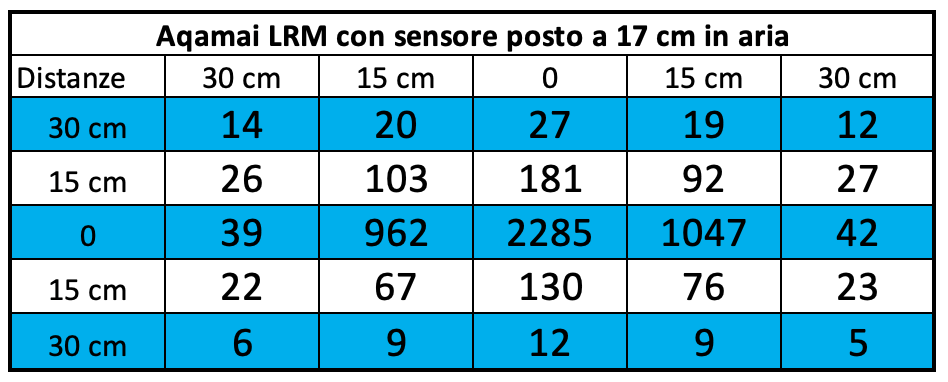
And for the corresponding chart we will use in uniformity the same scale for ceiling lights with similar power. So, if you read the article of the Philips CoralCare, you will find the same evaluation scale.
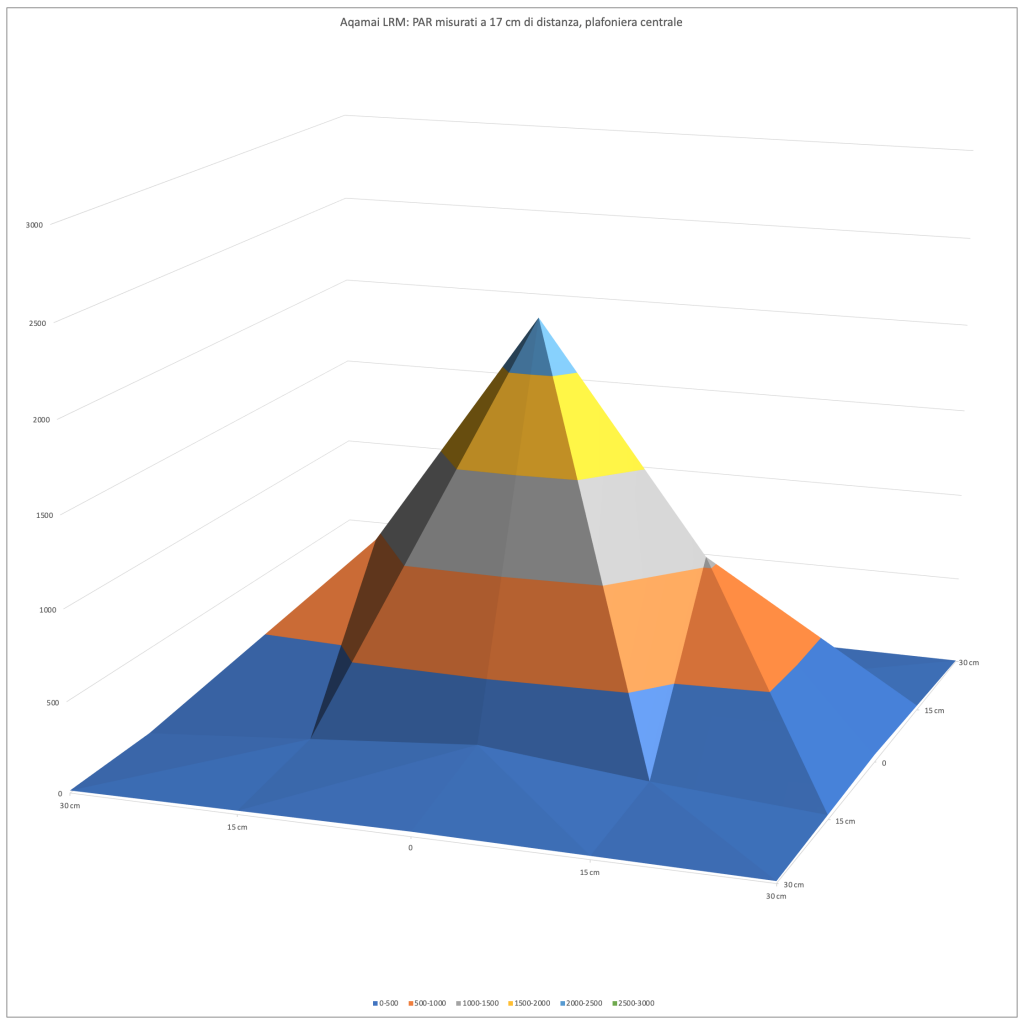
Because the ceiling light was very close to the sensor, and being it a double cluster model pretty contained in its dimensions, it’s obvious that the PAR quickly decrease on all the sides. But the chart (embracing an area of 60×60 cm) will show its usefulness when we will compare different ceiling lights. It immediately stands out that the peak value, measured in the middle, it’s higher than the Philips CoralCare’s, that even having twice the power prefer a more open solution for the aquarium covering.
PAR measurement from 37 cm of distance

This is the condition of the test. Below there are the chart and the device, above the ceiling light placed on the aluminum bars.
Here the collected values:
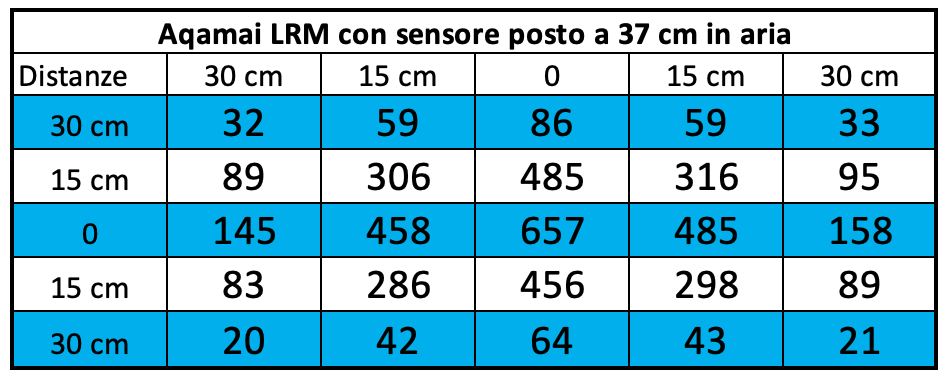
And for the corresponding chart we will use in uniformity the same scale for ceiling lights with similar power.
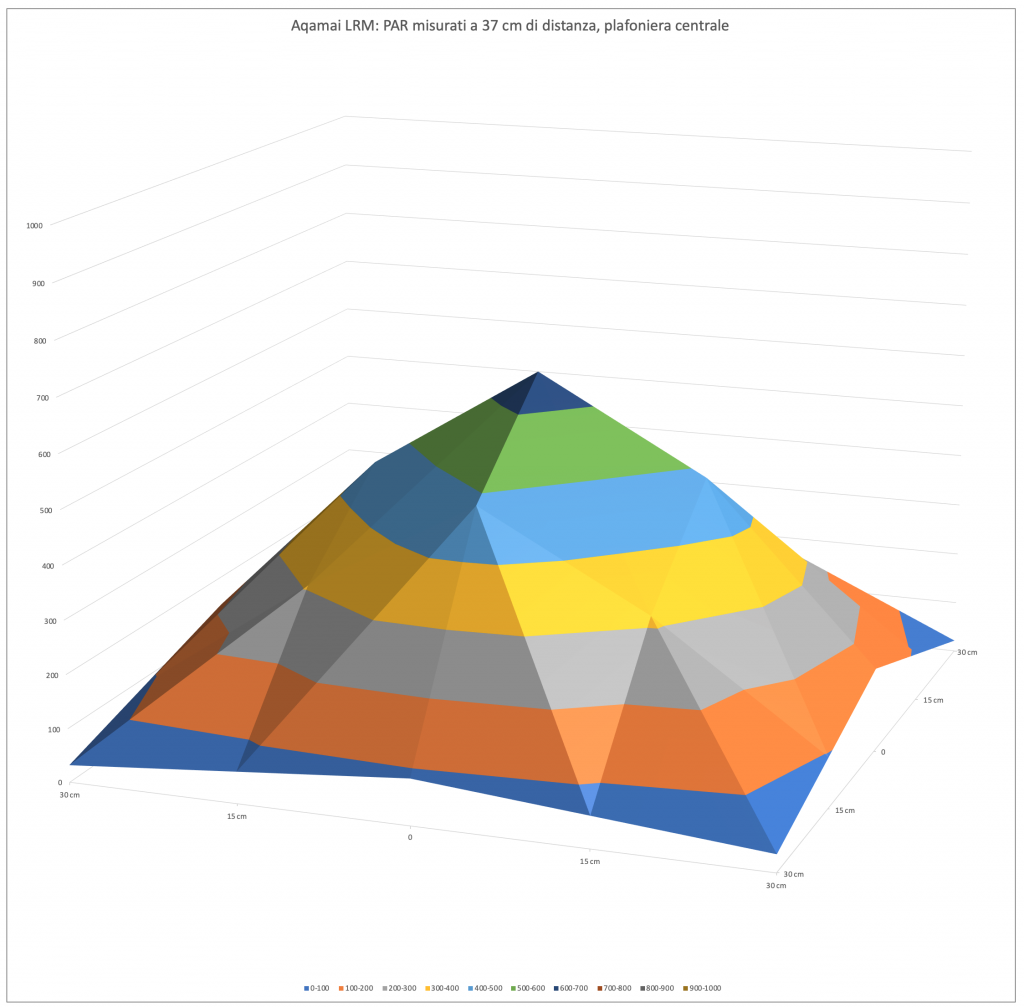
With a bigger space between ceiling lights and sensor, decreases the difference between PAR in the middle and on the sides. The light spreads, but the central value decreases from 2285 to 657 μmol m-2 s-1. 657
It stands out the full covering.
PAR measurement from 57 cm of distance
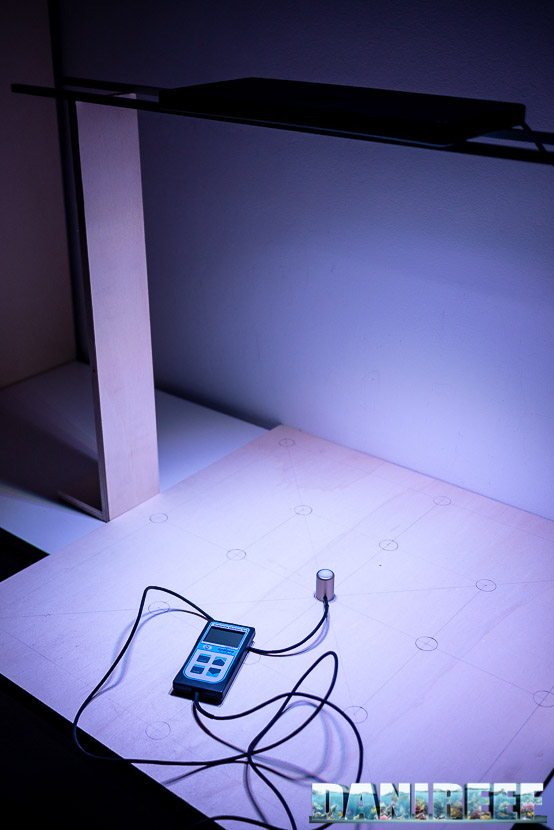
This is the condition of the test. Below there’s the chart, and from this distance it is very visible, the device, and the ceiling light placed on the aluminum bars. Even visually the illuminated area in very wider, so the specific power per cm decreases.
Here the collected values:
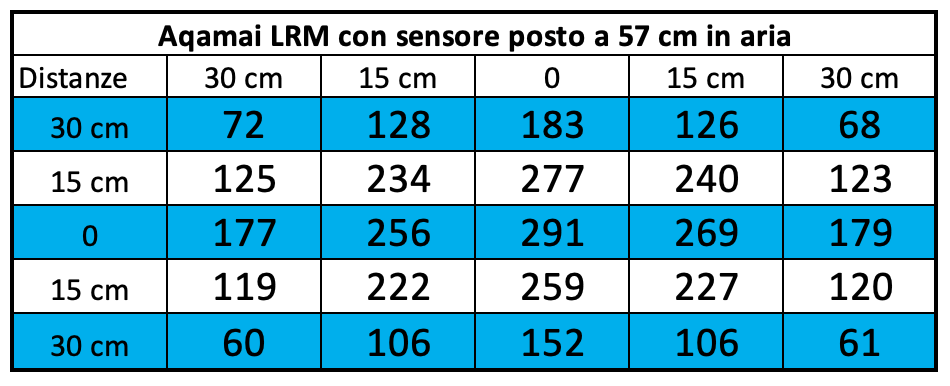
And for the corresponding chart we will use in uniformity the same scale for ceiling lights with similar power.
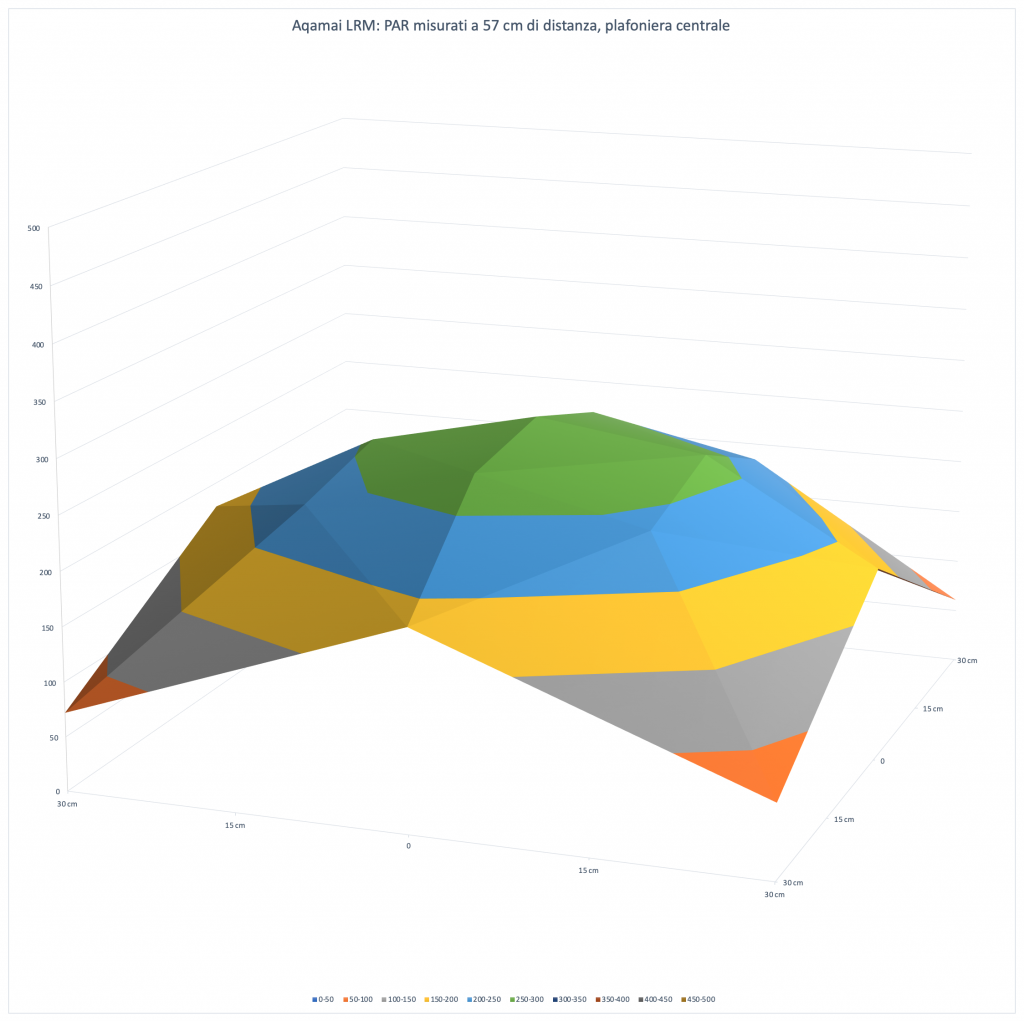
Increasing even more the space between ceiling light and sensor, it decreases even more the difference between PAR in the middle and on the sides. We have more uniformity, as expected. The light spreads, but the central value decreases from 2285 to 657 and to 291 μmol m-2 s-1.
Now it’s clear that the covering is wide.
The PAR in the center in the different configurations
Let’s continue with our technical measurements. We can see how, in a chart, the PAR collected in the middle decrease in the three different distances of the tests.
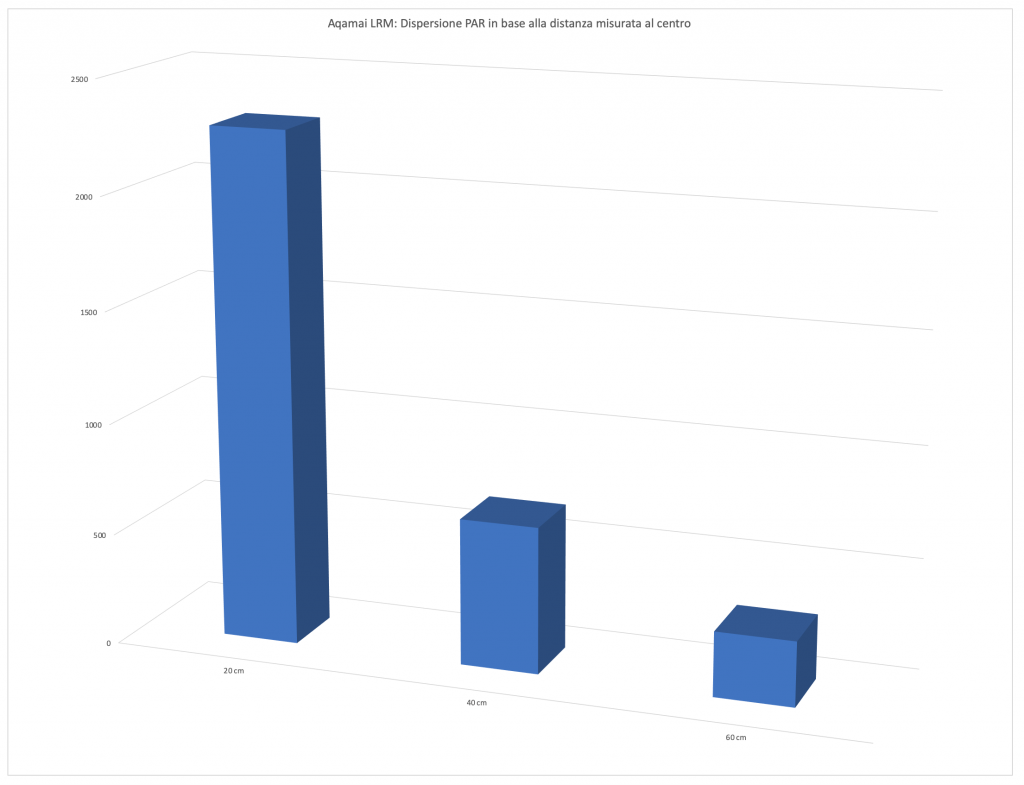
Energy variation of the Aqamai LRM depending on the distances
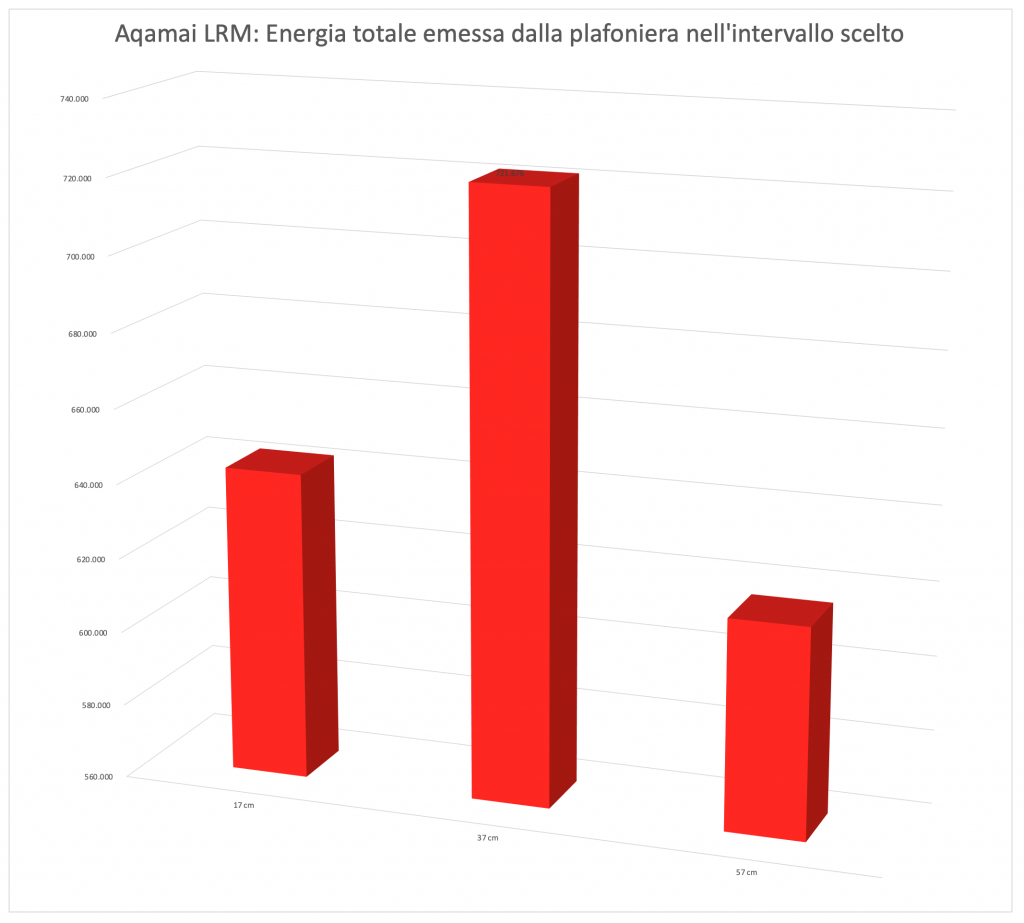
This one is the most significant and most comparable one: the energy variation. We calculated the volumes of the three surfaces previously seen. It’s obvious that moving away from the ceiling light the PAR also decrease, also because the light illuminates a wider space. In this way you can consider all the light energy contained in the 60×60 cm area subtended by the ceiling light. And the three values 642.649, 721.676 and 616.460 assume a different connotation compared to the values in the middle. When the first decrease because of the increasing of the distances, the subtended area, that is the energy, at first increases, because the main part of the lighting is in the middle, then it decreases because part of the energy is spread out of this area.
In fact, looking at the values of the three curves you can see that at the sides there’s more light at 57 cm than at 37 cm.
Values per channel in the middle in the three distances
We also measured the values per each channel, but only in the middle, in order to give you an idea of the contribution of the different channels on the PAR produced.
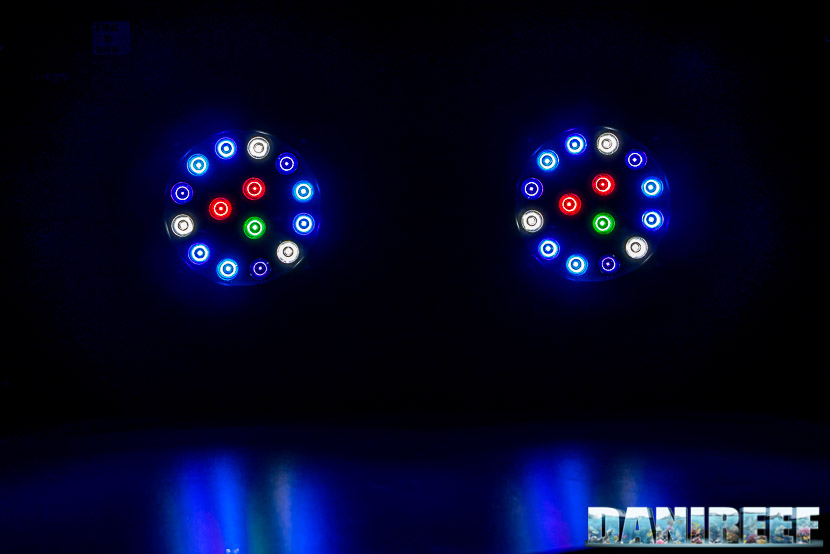
Let’s take a look at the measured values:
| Distance = 17 cm | Distance = 37 cm | Distance = 57 cm | |
| 1 Purple channel | 220 μmol m-2 s-1 | 51 μmol m-2 s-1 | 22 μmol m-2 s-1 |
| 2 Blue channel | 640 μmol m-2 s-1 | 197 μmol m-2 s-1 | 89 μmol m-2 s-1 |
| 3 Cyan channel | 580 μmol m-2 s-1 | 172 μmol m-2 s-1 | 78 μmol m-2 s-1 |
| 4 White channel | 566 μmol m-2 s-1 | 161 μmol m-2 s-1 | 73 μmol m-2 s-1 |
| 5 Green channel | 62 μmol m-2 s-1 | 17 μmol m-2 s-1 | 7 μmol m-2 s-1 |
| 6 Red channel | 251 μmol m-2 s-1 | 67 μmol m-2 s-1 | 30 μmol m-2 s-1 |
The Blue channel has more PAR than the white channel, about 15%. PAR are predominant for the Blue and Cyan. The Green channel has a very low incidence instead.
Let’s continue on page three with the costs, the comparison with other ceiling lights and our final opinion.



